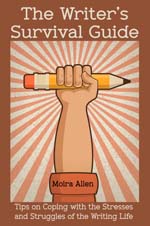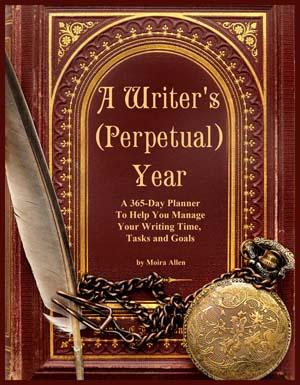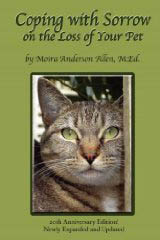 Your Guide to a Successful Writing Career
| ||||
|
by Moira Allen
Unfortunately, rejection is part of being a writer. Not just a beginning writer, either; experienced writers get them as well. (Admittedly, Stephen King's editor probably adds a nice note... Well, admittedly, I'm not sure Stephen King ever gets rejected these days, but on the other hand, where do you suppose he got the inspiration for all that horror?) One of the most important steps you can take as a writer is to learn how to cope with rejection, how to understand what it means to your career, and how to move on.
Writers are sensitive souls. If we weren't, we'd find something else to do. Unfortunately, that sensitivity also makes us more vulnerable to rejection.
The first step in handling rejection, therefore, is learning how to distinguish yourself from your work. You may pour your heart and soul into your writing, but, in order to survive as a writer, you must also be able to establish "boundaries" between yourself and your creation. Your writing may be like a child to you, but like any child, it must go out into the world to succeed or fail on its own merits. If you can't develop that sense of boundary, you'll go nuts -- and quite simply stop. Success will become impossible if you cannot bear the pain of failure.
You've probably heard that editors who reject your work aren't rejecting you -- and that's true. However, they may not be rejecting your work either. Lack of quality is only one reason for rejection. There are many others. While the standard "Does not meet our editorial needs at this time" doesn't tell you why a piece was refused, it could have been for any of the following reasons:
It's also possible to write an excellent article that still doesn't quite mesh with an editor's tastes in terms of style, tone, approach, angle, viewpoint, or even length. (I once had a piece rejected for being "too short" -- when I added 300 words, it was accepted.) Again, this doesn't mean that your article was poor; it means that it came close but not quite close enough. That brings me to the final reason for rejection: Sheer volume. If an editor can accept five articles per month out of a pile of 500, it isn't only the "bad" articles that are going to be rejected. Perfectly good articles will also be rejected, simply because the editor can't buy all of them. Your article may be perfect in every way, yet be sent back just because it was #6 in the stack of "maybes."
Is there such a thing as a "good" rejection slip? Absolutely. Any rejection slip that offers actual information is "good" -- because it helps you understand the reason for the rejection. Some magazines offer a "checklist" letter, listing many of the potential reasons for rejection and "checking" the one that applies to you. Finding out that someone else had already been assigned to the topic is a lot more comforting than being left to assume that the editor thought your article stank. Even better than checklists, however, are rejections that include a personal note of any kind. Even the barest scribble shows that the editor thought enough of your piece to respond personally, rather than scrawling "No" on the outside of the envelope and passing it off to an assistant. Treasure those scribbles; they mean that you are making a positive impression. Still higher on the list of "positive" rejections is the "please try again" note. When an editor asks you to come back with another submission, believe it: No editor will ever say this unless s/he means it. This is often the result of a submission that "just misses" acceptance for one of the reasons listed above. Quite often, the editor truly wishes s/he could purchase your piece, but can't -- and doesn't want to lose the opportunity to grab you as a contributor. Whenever you're asked to try again, try again!
While there may be dozens of reasons why an editor rejected your piece that have nothing to do with quality, a writer must also be willing to ask honestly whether, in fact, quality was the issue. When we write, we often become so involved in a piece -- so close to what we have written -- that an accurate assessment of quality becomes difficult. Often, our work isn't as good as we thought it was -- or wasn't what our target market required. When I teach writing, I'm amazed by how many students expect to sell their first piece of writing to Cosmopolitan or Woman's Day. There's nothing wrong with dreaming "big." There's also nothing wrong with having to work up to those dreams. Failure isn't a matter of aiming at Cosmopolitan and missing. Failure is a matter of failing to take the steps necessary to hit your target -- maybe not today, maybe not this year, maybe not even next year, but eventually. Good writing evolves over time. For most of us, it is a skill, not a gift -- and skills are refined over time. Sure, there are occasional "prodigies" who craft the perfect bestseller the first time they pick up a pen -- just as there are "prodigy" musicians who play perfectly the first time they pick up the violin. For the rest of us, perfection is achieved by plodding -- and by endless practice that may, for a time, make everyone around us cover their ears and wince. The reality of writing is that when you start, you think you're pretty good. After a year, if you've been writing steadily, you're likely to look back on those first efforts and wonder what on earth you saw in them. After you've been writing for five years, you may look at those first-year masterpieces and wonder why you didn't burn them on the spot. (This process never ends: As you continue to improve, you'll feel this way 20 years from now, about the stuff you write 19 years from now.) To some writers, this scenario sounds depressing -- but what would be even more depressing is the idea that you can't get better! Writing is a somewhat schizophrenic process. We must be able to look at each piece we produce and say, honestly, "This is the best I can do." At the same time, we must also be able to say -- equally honestly -- "I can do better." Both statements are true. What you write today is the best you can do -- today. Tomorrow, quite probably, you'll do better. But only if you don't stop writing today.
Someone developed a t-shirt with a picture of the Titanic on the front and, on the back, the words: "It sank. Get over it." The same can be said of rejection. It came back. Get over it. Or more to the point, get used to it -- because if you practice your craft, you're going to get a lot of rejections over time. "Getting used to" rejection doesn't mean that rejection ever loses its sting. It doesn't. Nor is that a bad thing: I suspect that the day rejection ceases to hurt is the day one has lost one's passion for writing. Pain isn't a bad thing. Pain simply means we care. At the same time, there are things you can do to ease the sting. The next time your material comes back with one of those awful slips, try one of these:
At the beginning of this article, I asked whether anything was worse than a rejection slip. The answer is "yes." Far worse than a rejection slip is never having written anything that could have been rejected in the first place.
Moira Allen is the editor of Writing-World.com, and has written nearly 400 articles, serving as a columnist and regular contributor for such publications as The Writer, Entrepreneur, Writer's Digest, and Byline. An award-winning writer, Allen is the author of numerous books, including Starting Your Career as a Freelance Writer, The Writer's Guide to Queries, Pitches and Proposals, and Coping with Sorrow on the Loss of Your Pet. In addition to Writing-World.com, Allen hosts VictorianVoices.net, a growing archive of articles from Victorian periodicals, and The Pet Loss Support Page, a resource for grieving pet owners. She lives in Kentucky with her husband and the obligatory writer's cat. She can be contacted at editors "at" writing-world.com. |
| |||
| ||||




